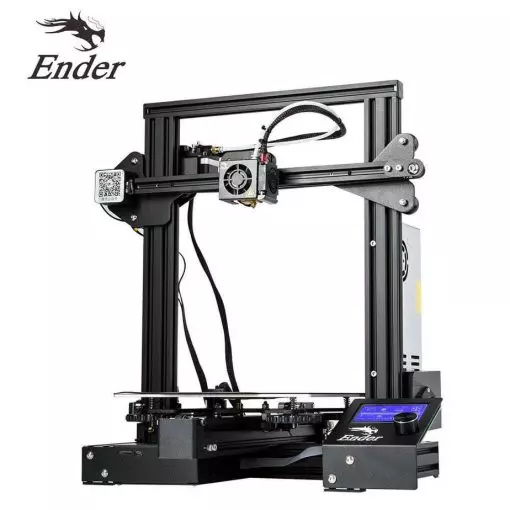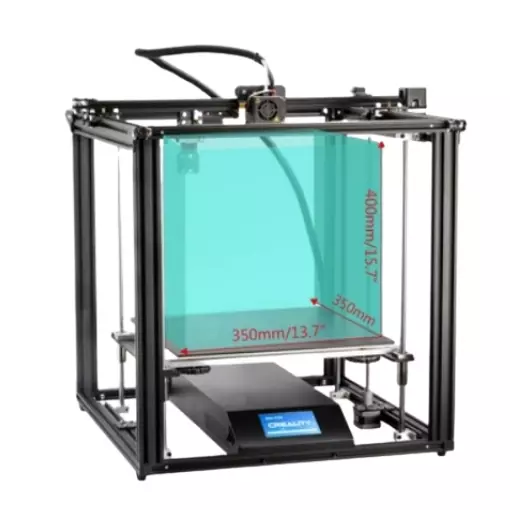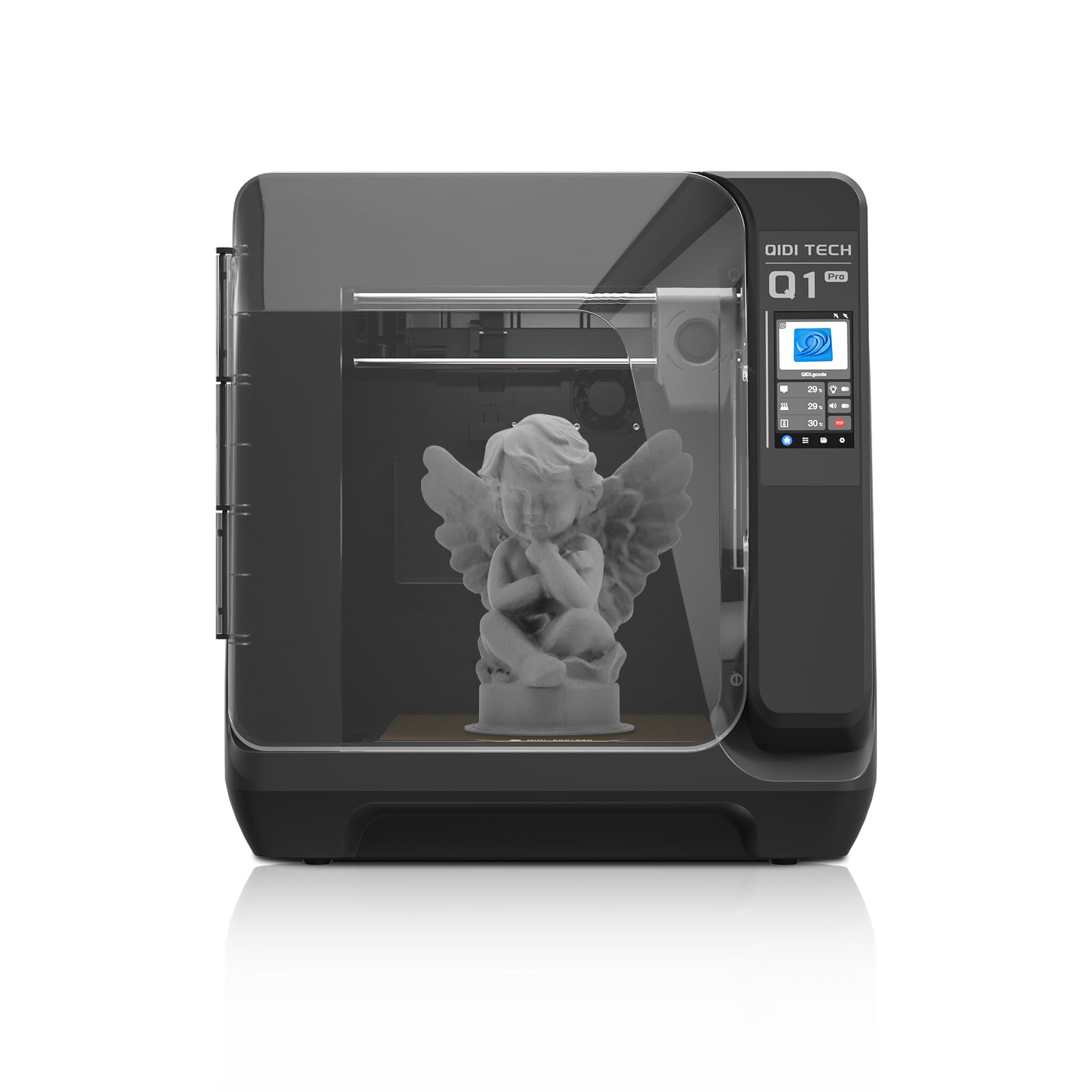Compare Ender 3 vs Ender 5 Plus vs Q1 PRO
Comparison between the best 3D printers
Choose the best 3D printer at the best price. The cheapest 3D printers are here.
Buy a 3D printer here with 3D Fila.
 |
 |
 |
|
| Model | Ender 3[BUY Ender 3] |
Ender 5 Plus[BUY Ender 5 Plus] |
Q1 PRO[BUY Q1 PRO] |
| Printing Material | Filament | Filament | Filament |
| Estimated price | $210,00 | $599,00 | $449,00 |
| Fabricante | Creality 3D | Creality 3D | QIDI |
| Release Year | 2018 | 2019 | 2024 |
| Print Volume [mm] | 220x220x250 | 350x350x400 | 245x245x245 |
| Printer Size [mm] | 440x440x465 | 632x619x666 | 467x477x489 |
| Weight [kg] | 6,62 | 18,2 | 20 |
| Power Loss Recovery | NO | YES | YES |
| Enclosed printer | NO | NO | NO |
| Bed Leveling | Manual | Automatic | Automatic |
| Filament End Sensor | NO | YES | YES |
| Bed type | Heated | Heated | Heated |
| Power supply system | Bowden | Bowden | Direct Drive |
| Standard nozzle | 0,4 | 0,4 | 0,4 |
| Maximum Nozzle Temperature [°C] | 255 | 260 | 350 |
| Maximum Bed Temperature [°C] | 110 | 100 | 120 |
| Maximum printing speed [mm/s] | 180 | 180 | 600 |
| Filament holder | YES | YES | YES |
| Camera for supervision | NO | NO | YES |
| Recommended filaments | PLA, TPU, ABS, PETG | PLA, TPU, ABS, PETG | PLA、ABS、ASA、PETG、TPU、PC、PA、PA-CF、PET-CF、PAHT-CF etc. |
| Recommended slicers | Cura, Simplify, Slic3r | Cura, Simplify, Slic3r | QIDI Slicer/Cura/Simplify 3D/ORCA/PRUSA Slicer |
| Maximum Resolution [mm] | 0,1 | 0,1 | 0,1 |
| Processor | 8 bits | 32 bits | Cortex-A53,64-bit Processor |
| Display | Mono | Touchscreen TFT 4,3'' | Touchscreen 4,3'' |
| Power Supply | 24V / 270W | 24V / 504W | 350 W |
| Connectivity | SD / USB | SD / USB | WiFi/USB Flash Drive/Ethernet Cable |
| Operating systems | Windows, Mac, Linux | Windows, Mac, Linux | Windows, Linux, Macbook |
| Date of registration in the system | 2021-04-13 | 2021-04-14 | 2024-07-09 |
| Release date | 2018 | 2019 | 2024 |
| Extra features | The Ender 3 V1 is a DIY assembly 3D printer, a sales leader since 2017, standing out for its cost-benefit. With a wide printing capacity, it has a CNC machined structure for precision and stability. It offers high-precision prints with low noise, thanks to its innovative V-profile and pulleys. It has a self-adhesive magnetic platform for easy removal of models and excellent adhesion. The Ender 3 heats up quickly, reaching 100°C in 5 minutes, ideal for agile prints. It includes protection against power failures, allowing you to resume printing after interruptions, saving time and material. | The Ender 5 Plus offers a large print volume (350x350x400 mm) and fast assembly. It includes a BLTouch sensor, but with range limitations. It stands out for its dimensional accuracy, although it requires adjustments to the slicer settings. Despite the noise, its integrated design saves space, and includes features such as a filament sensor and power resumption. Ideal for large projects, it requires refinement in the settings for high-quality prints. | The QIDI Q1 Pro 3D printer stands out for its Core XY structure and heating chambers that reach up to 60ºC, ideal for advanced materials such as ABS and Nylon. It features Klipper firmware, an automatic leveling system, a high-flow extruder with a double metal nozzle and a hotend that reaches 350ºC. It offers connectivity via Wi-Fi, USB and Ethernet, as well as a 1080p camera for remote monitoring and an intuitive touchscreen for easy operation. |
| Support for multiple colors and materials (AMS and CFS) | NO | NO | NO |
Notes * |
|||
| Cost-benefit | 6 / 10 | 6 / 10 | 8 / 10 |
| Hardware | 0.5 / 10 | 2 / 10 | 5.4 / 10 |
| Screen | . | . | . |
| Print volume | 3 / 10 | 4 / 10 | 3 / 10 |
| Performance | 1 / 10 | 1 / 10 | 5 / 10 |
| [BUY Ender 3] | [BUY Ender 5 Plus] | [BUY Q1 PRO] |
Conclusion |
| In comparing the Ender 3, Ender 5 Plus, and QIDI Q1 Pro 3D printers, a distinct differentiation emerges based on their pricing, features, and performance capabilities. The Ender 3 is marketed as the most budget-friendly option, making it an attractive choice for beginners or those new to 3D printing. It provides decent print quality with a manual bed leveling feature, but it lacks advanced recovery and sensor functionalities, which may pose challenges during longer print jobs. Despite its limitations, it offers a good cost-benefit ratio. The Ender 5 Plus, while significantly more expensive, boasts a larger print volume and enhanced features like automatic bed leveling and a filament end sensor. These upgrades can streamline the printing process and lead to more consistent results. However, it does require some user adjustments to achieve optimal print quality, which may not appeal to all users. On the other hand, the QIDI Q1 Pro, positioned at a mid-range price point, is equipped with advanced technology, including a high-flow extruder, a wider temperature range, and multiple connectivity options. This printer is particularly suited for users looking to handle a variety of materials, including advanced filaments like Nylon and PC. The added convenience of a touchscreen interface and a built-in camera for remote monitoring enhances user experience significantly. In conclusion, if budget constraints are the primary concern, the Ender 3 is a solid choice for those starting in 3D printing. For users requiring a balance between price and performance, the Ender 5 Plus serves as a viable option with additional features that justify its higher cost. However, for advanced users who prioritize versatility and technology, the QIDI Q1 Pro ultimately stands out as the best investment, despite its higher price tag. Each printer caters to different user needs, making the choice largely dependent on individual priorities and intended applications in 3D printing. |

